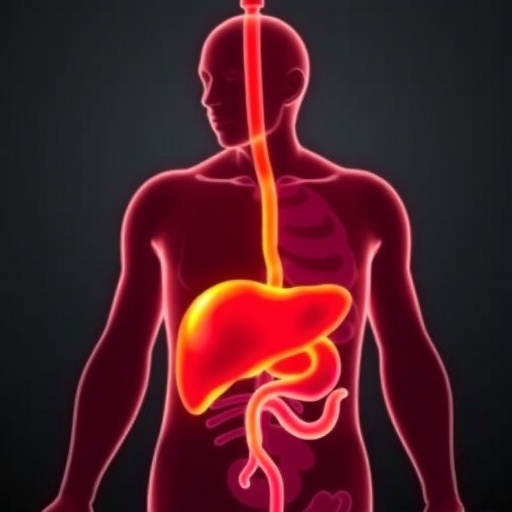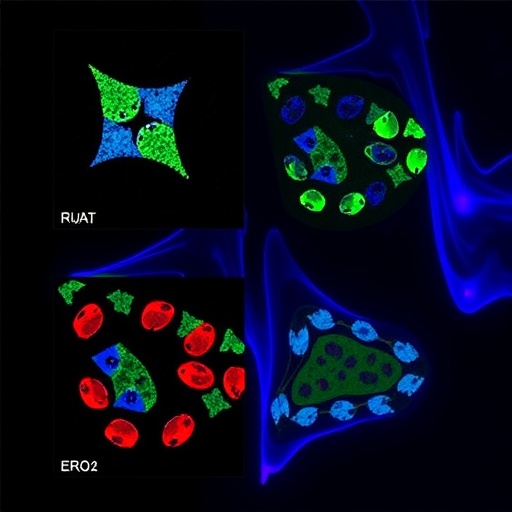In a compelling and insightful letter to the editor, researchers Bose, Sridharan, and Gupta have addressed critical elements regarding Metabolic Dysfunction-Associated Steatotic Liver Disease (MASLD) within the context of Indian populations. This letter follows the publication of the MAP Study, which sought to create a comprehensive profile of MASLD across diverse demographics in India. The researchers underscore the importance of this disease, which has emerged as a significant health concern due to its association with metabolic syndrome, diabetes, and various hepatic complications.
The contemporary prevalence of metabolic diseases in India cannot be overstated, especially concerning the alarming rates of obesity and diabetes. As urbanization and lifestyle changes continue to influence dietary habits across the nation, the implications of these trends manifest prominently in the liver’s health. MASLD is increasingly recognized in both clinical practice and research, making it vital for healthcare professionals to understand its implications within the Indian context. Notably, MASLD is not merely a consequence of excessive alcohol consumption but is often attributed to the accumulation of fat in the liver in non-alcoholic individuals, highlighting the importance of focusing on non-alcoholic fatty liver diseases (NAFLD).
Bose and colleagues advocate for the need to tailor research to encompass the unique genetic, environmental, and lifestyle factors that contribute to the prevalence of MASLD in Indian populations. The presence of varying metabolic phenotypes within the country necessitates an interdisciplinary approach to unravel the disease’s complexities. The MAP Study provides a foundational framework for acknowledging these disparities, offering a lens through which targeted interventions and treatments can be developed.
The expertise of these authors lends credibility to their assertions. They shed light on the lore surrounding metabolic dysfunctions in underestimated demographics, particularly among younger populations that are increasingly presenting with fatty liver diseases. In India, this trend signifies a shift in health paradigms, emphasizing the urgent need for early detection and intervention strategies tailored to these emerging profiles. Given this shift, educational campaigns targeting dietary modifications and lifestyle adjustments hold promise as preventative measures against MASLD.
Moreover, the researchers highlight the role of socioeconomic factors in influencing susceptibility to MASLD. Lower income levels and limited access to healthcare services play a significant role in the prevalence of metabolic diseases in various strata of Indian society. Consequently, enhancing public health policies to address these disparities will prove essential in curbing the rising tide of MASLD cases. Additionally, the intersection of culture, community practices, and consumption patterns deserves further exploration in future studies, as these factors are integral to understanding disease spread and management.
It is also imperative to include an exploration of the molecular mechanisms underlying MASLD. The biochemical interactions within the liver cells can be complex and multifactorial, involving genetic predispositions, insulin resistance, and oxidative stress. Furthermore, the pathological progression from simple steatosis to more severe forms, such as steatohepatitis or cirrhosis, warrants investigation to establish clear early biomarkers for intervention. Understanding these processes could equip healthcare professionals with the necessary tools to anticipate and manage MASLD effectively.
The implications of this research extend beyond India, as global health trends shift towards non-communicable diseases. The findings elucidated in the MAP study and the subsequent correspondence by Bose, Sridharan, and Gupta serve as a crucial reminder that metabolic diseases can transcend borders. The insights gleaned from the Indian population may also resonate with other regions facing similar epidemiological transitions, emphasizing a need for a global approach to combatting MASLD.
Furthermore, the interplay between obesity, diabetes, and MASLD opens new avenues for future research. Investigating the links between these conditions could reveal novel therapeutic targets and strategies for effective disease management. The letter encourages researchers to engage with multi-faceted approaches that combine pharmacological interventions with lifestyle modifications in addressing MASLD.
The role of technology in managing MASLD also cannot be overlooked. Digital health solutions can facilitate patient adherence to therapeutic regimens and offer a platform for ongoing education on best practices for liver health. Mobile health applications designed with user-friendly interfaces can foster engagement and promote lifestyle changes necessary for preventing MASLD. As digital interventions gain traction, they may provide a cost-effective solution for healthcare systems grappling with an increase in metabolic diseases.
Moreover, as the field of personalized medicine evolves, acknowledging individual variability in responses to treatments will be crucial. Genetic screening for susceptibilities to MASLD can guide healthcare providers in crafting tailored treatment plans to improve outcomes. Personalization in managing health not only optimizes therapeutic efficacy but also empowers patients to take charge of their health journeys.
In summary, the letter to the editor authored by Bose and colleagues brings to the forefront significant issues surrounding MASLD in the context of Indian demographics. Their call to action is clear: prioritize research that embraces genetic, environmental, and sociocultural factors influencing this disease. As the country grapples with soaring rates of metabolic disorders, public and private sectors must collaborate to implement strategies that mitigate risks associated with MASLD.
Ultimately, the researchers emphasize the invaluable role of continued discourse in clinical and academic circles regarding MASLD. They strongly advocate for a concerted effort to challenge the status quo, broaden understanding, and develop actionable solutions to combat this escalating health burden. This letter serves as both a reflective piece and a beacon for future research directions, forming a critical part of the conversation surrounding metabolic diseases in India and potentially elsewhere.
The need for urgent action is underscored in every paragraph, highlighting the risks associated with inaction. As understanding of MASLD grows, so too must our responses to it. Enhanced healthcare practices, reinforced by cutting-edge research and collective community engagement, will be paramount in addressing this troubling trend and safeguarding future generations against the consequences of metabolic dysfunction.
Subject of Research: Metabolic Dysfunction-Associated Steatotic Liver Disease in Indian Populations
Article Title: Letter to the Editor Regarding ‘Profile of Metabolic Dysfunction-Associated Steatotic Liver Disease: Mapping Across Different Indian Populations (MAP Study)’
Article References:
Bose, R., Sridharan, K. & Gupta, R. Letter to the Editor Regarding ‘Profile of Metabolic Dysfunction-Associated Steatotic Liver Disease: Mapping Across Different Indian Populations (MAP Study)’. Diabetes Ther (2025). https://doi.org/10.1007/s13300-025-01808-6
Image Credits: AI Generated
DOI: 10.1007/s13300-025-01808-6
Keywords: Metabolic Dysfunction, Steatotic Liver Disease, Indian Populations, Research, Public Health, Diabetes, Obesity.
Tags: clinical implications of MASLDdiabetes and hepatic complicationsdietary habits and liver healthgenetic factors in MASLDhealthcare strategies for MASLD in IndiaIndian liver disease prevalencelifestyle changes and liver diseasemetabolic dysfunction-associated steatotic liver diseasemetabolic syndrome in Indianon-alcoholic fatty liver diseaseobesity and liver healthurbanization impact on health





